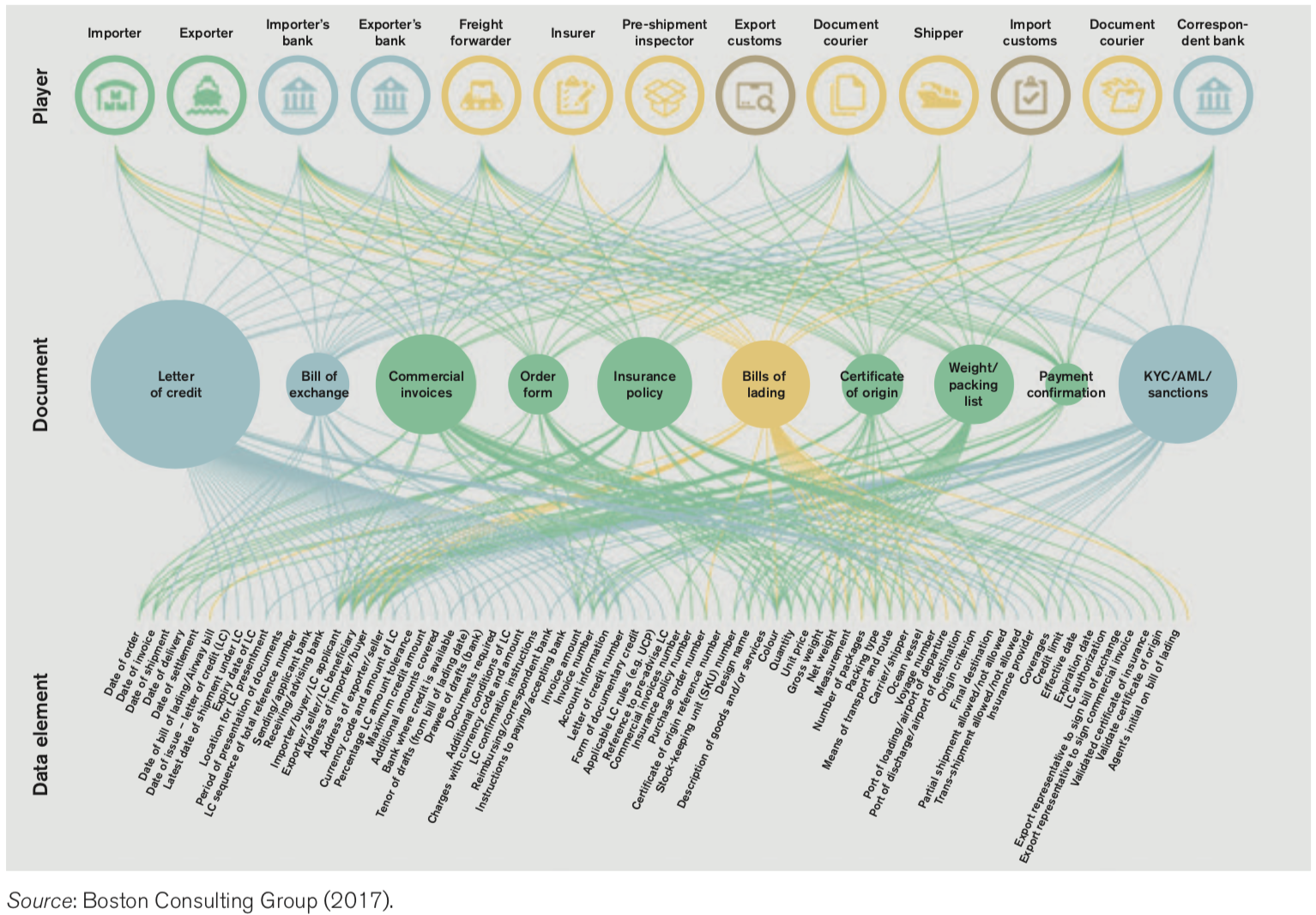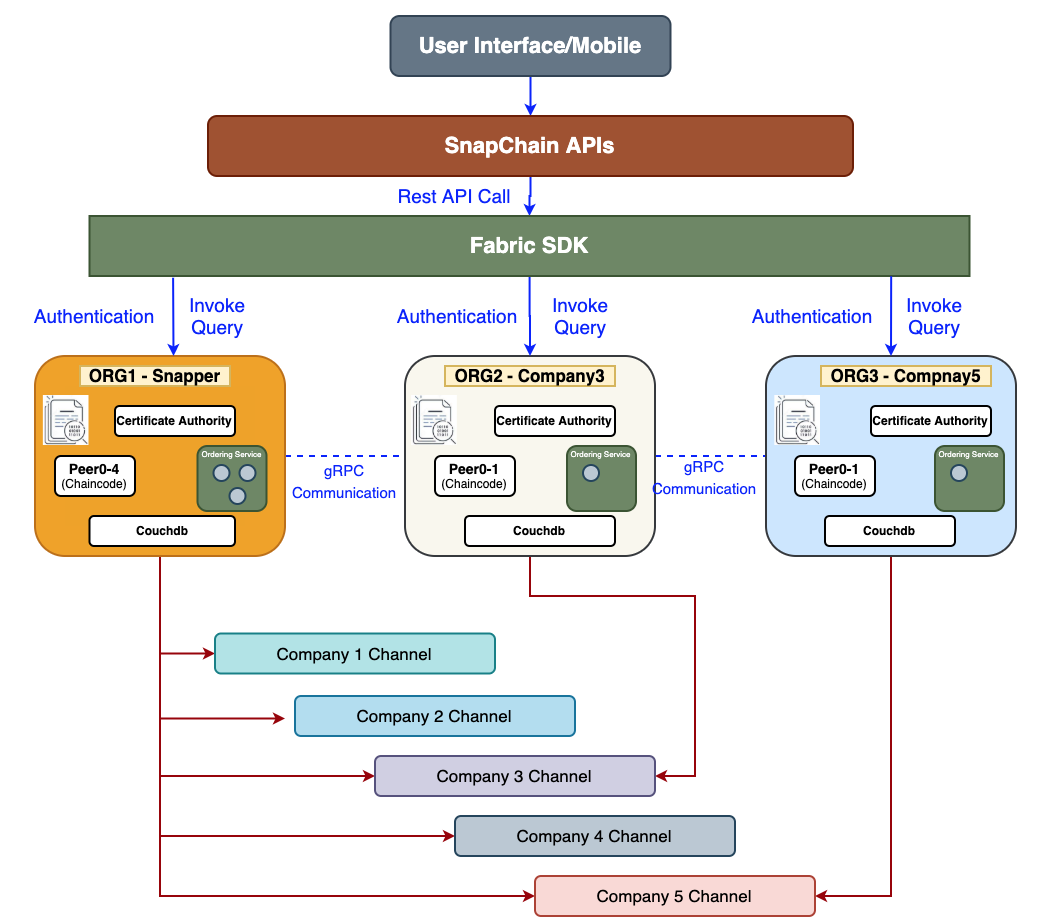
Challenges in Supply Chain
Supply chain processes are complex and involve many players, heavy documentation and large data sets. Businesses across supply chains work in silos and communication between them is largely through email or phone calls causing issues related to efficiency and costs, data availability and redundancy, transparency and reconciliation, and fraud and trust.

Blockchain Use Cases in Supply Chain
With the advent of blockchain technology, CEOs and CIOs have paid increasing attention to mitigating industry challenges through technology adoption. Supply chain focus area are
- Track and trace of assets through supply chain
- Provenance to find origin or authenticity of products
- Circular economy to reduce carbon footprint by secondary use or recycling products
- Customer engagement through loyalty programs using tokenization
- Financial transactions through crypto tokens and smart contracts
- Automation by capturing and recording data of physical movements using IoT or from different sources.
Blockchain Success Stories in Supply Chain
There are various case studies and success stories that have proved the potential impact of blockchain technology across a number of supply chain use cases:
- ~50% improved communication efficiency of documents like commercial invoices, bills of lading
- Lower transport and logistics costs
- Shorter lead time and less frequent delays
- Time needed to trace their provenance went from 7 days to… 2.2 seconds!
- Vendor onboarding cycle time cut from 60 days to 3 days
- For buyers: 50% less cost to verify and maintain a supplier’s information
- For sellers: much faster time to first sale
- $4 million in sales in less than a year
- Purchase time reduced from days to minutes
- Future boost to anti-counterfeit measures
- Reduction of invoice disputes from 70% to 1.5%
- The error threshold for each transaction went from $10 per invoice to $0 per invoice.
- Timeline to approve carrier invoices from 6-8 weeks, but often extended over many months, went to less than one week.
- Merchant onboarding time reduction from more than 20 days to one day
- Higher visibility to all parties in the transactions
- Eases merchant renewal processes
- Standardized AML & KYC processes
- Increased cost savings due to automation
Blockchain Frameworks in Supply Chain
Most of the supply chain projects are implemented using Hyperledger frameworks, especially Hyperledger Fabric. Hyperledger Fabric is a blockchain framework implementation hosted by Hyperledger, which is part of the Linux Foundation. Hyperledger Fabric is a secure and scalable open-source distributed ledger platform developed with permissions and privacy as its core tenets. Unlike permissionless, distributed blockchains, Hyperledger Fabric leverages a modular architecture that provides enterprises plug-and-play solutions for private transactions and confidential contracts within a network of multiple vendors. This allows an organization to bring together all the stakeholders within its multi-partner ecosystem under one architecture to automate and implement universal workflows across the network.
Hyperledger Fabric is a mature framework that is well suited to deliver low latency, high throughput, and fast send rates along with privacy controls needed for supply chain solutions.
Current State of Blockchain Adoption in Supply Chain
Blockchain benefits are quite visible in the above mentioned success stories. That is why there are many initiatives going on for supply chain-related implementations of blockchain across industries. But it is taking time for these projects to go into production. According to Gartner, “80% of Supply Chain Blockchain Initiatives Will Remain at a Pilot Stage Through 2022.”
Snapper has been working with customers across industries for supply chain solutions. We follow a robust process-of-implementation approach to blockchain, and use a design thinking process to identify the right use cases and the benefits the customer would get. We realized that the customers are very enthusiastic about the use of technology as part of their digital transformation. However, the understanding level of the technology is very limited for most of the customers before engaging with us. Through our design thinking process, customers get to have a good understanding of how blockchain works, what are the benefits and the implementation challenges. One of the major challenges supply chain leaders realize is that building an ecosystem/consortium of stakeholders is a requirement for a blockchain network. As developing an ecosystem is a difficult task and involves high risk, customers are cautious about investing in such solutions and thus delay the decision to implement blockchain solutions. They are in a dilemma whether to take a lead in creating the network or be part of the existing network. Also there are only limited options available for an organization to join an existing blockchain network for their industry. Customers want to see more and more success stories to validate their decisions.
What is Needed For Faster Adoption of Blockchain Technology
Implementation of blockchain technology not only helps organizations achieve digitalization goals but also creates opportunities for new business models. An organization has to decide whether it wants to grab this opportunity of taking the lead in creating a new consortium, driving new business models and increasing efficiency by adopting blockchain now, or wait for the technology to mature and be a follower.
Only large-scale enterprises can influence implementation of complex supply chain solutions. It is very difficult for medium and small-scale enterprises to create a blockchain-enabled supply chain network.
Faster adoption of blockchain can be achieved through the network effect by inclusion of all sizes of enterprises, faster implementations, cost-effective solutions, more and more success stories and maturity of the technology.
Snapper Future Tech is working on an innovative supply chain traceability solution designed to help the community achieve faster adoption. Snapper’s supply chain solution, SnapChain, is designed to empower an enterprise to create its own network without any major investment or risk. Business networks can be small or big, and can be led by any organization throughout the supply chain. Onboarding a business partner on the network is easy and flexible. This is being achieved by creating a metamodel architecture with configurable modules, transactions types and transaction screens
SnapChain Architecture

SnapChain architecture gives an organization the flexibility to host a node and have its own network of partners with a dedicated ledger using a private channel to maintain data privacy. Each organization has one endorsing, one committing peer and one ordering node. Each transaction is endorsed by Snapper peers and organization peers. Smaller organizations can be part of a common organization maintained by Snapper.
Cover Image Copyright Thai Subsea Services Ltd.
